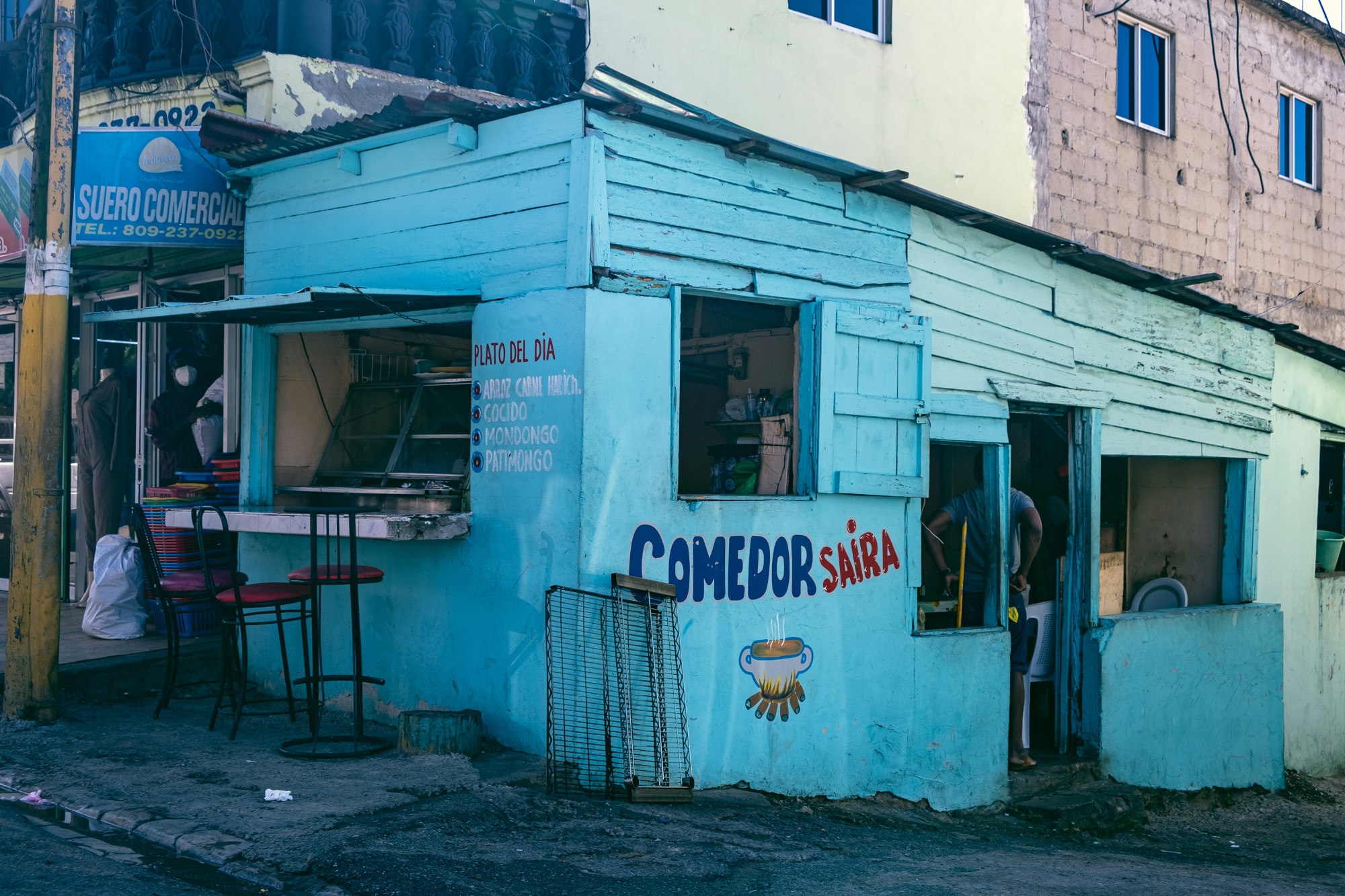The Dominican Republic has long been hailed as a premier vacation destination in the Caribbean, famous for its tropical beaches, luxurious resorts, and lively culture. However, beyond the glossy travel brochures and stunning beach photos, there are several serious concerns that make the Dominican Republic less than ideal for many travelers. From safety risks to environmental degradation, poor healthcare, and other troubling issues, here are 15 reasons why you might want to think twice before booking a trip to the Dominican Republic.
1. High Crime Rates and Safety Concerns
While the Dominican Republic is heavily promoted as a tourist paradise, crime is a significant issue that often goes underreported. Violent crimes such as armed robberies, assaults, and even incidents of kidnapping have occurred in various parts of the country, including popular tourist zones. Travelers are frequent targets for crimes like pickpocketing, purse-snatching, and scams, especially in areas outside of the heavily-policed resort compounds.
Even within the resorts, safety can be a concern. There have been high-profile cases of violent crimes against tourists in recent years, raising questions about whether the country is truly as safe as the travel industry portrays it. Additionally, tourists are often warned against venturing out alone or visiting certain areas at night due to safety risks. The perception of widespread police corruption exacerbates the issue, as many visitors feel they can’t trust local authorities to effectively handle or prevent crime.
2. Inadequate Healthcare and Health Risks
The Dominican Republic’s healthcare system is underfunded and poorly regulated, making it a serious concern for travelers who may need medical assistance. Outside of a few private hospitals in cities like Santo Domingo and Punta Cana, most healthcare facilities are far below Western standards. Public hospitals often lack basic supplies, and wait times can be extremely long. Moreover, if you need emergency care in rural areas, access to quality treatment can be nearly impossible.
The country also poses a number of health risks, including mosquito-borne diseases such as dengue fever, malaria, and Zika virus. Sanitation is another concern, as tap water is not safe to drink and tourists are often warned about foodborne illnesses from improperly handled or cooked food. Waterborne diseases, such as hepatitis A and typhoid fever, are prevalent, especially in poorer regions of the country.
3. Lack of Cleanliness and Poor Sanitation
One of the most disappointing aspects of visiting the Dominican Republic for many travelers is the lack of cleanliness in certain areas, both inside and outside of tourist hotspots. While luxury resorts are generally well-maintained, public spaces, beaches, and even some mid-range accommodations can suffer from poor sanitation. Visitors often encounter littered streets, dirty public restrooms, and trash-strewn beaches that tarnish the otherwise beautiful surroundings. This lack of attention to cleanliness can make even the most picturesque spots feel unappealing, especially in more crowded tourist areas where waste management is inadequate.
Beyond visible litter, there are also concerns about sanitation standards in restaurants, public markets, and street food vendors. Poor hygiene practices can lead to food contamination, which poses health risks for tourists. In rural areas or less developed parts of the country, access to clean water and reliable sanitation infrastructure is limited, meaning travelers may need to be extra cautious. For those expecting a pristine, well-maintained environment during their vacation, the lack of cleanliness in many parts of the Dominican Republic can be a major disappointment and a potential health hazard.
4. Severe Traffic and Road Safety Issues
Driving in the Dominican Republic can be a dangerous and chaotic experience due to the country’s poorly maintained roads and lax traffic laws. The country has one of the highest rates of traffic fatalities in the world, with reckless driving, speeding, and a lack of enforcement of traffic regulations contributing to the problem. Accidents involving motorbikes, a common mode of transport in the country, are frequent and often fatal.
Tourists who rent cars are frequently advised to be extra cautious, as traffic lights are often ignored, and many roads are poorly marked. Additionally, pedestrians and cyclists frequently share the roads with vehicles, increasing the risk of accidents. Even within major cities like Santo Domingo, the driving experience is far from safe, and the lack of public transportation infrastructure makes travel within the country inconvenient and risky for many visitors.
5. Unreliable Public Services and Infrastructure
The Dominican Republic suffers from a significant lack of infrastructure in many areas, including inconsistent electricity and water supply. Rolling blackouts are common, even in tourist-heavy areas, leaving visitors without air conditioning or access to basic services for hours at a time. For those staying outside of luxury resorts, these outages can be especially disruptive, with power often out for extended periods during the hottest parts of the day.
Water shortages are also a common issue, and in many areas, even bottled water is not readily available, forcing visitors to pay exorbitant prices. While high-end resorts and hotels may shield tourists from some of these inconveniences, travelers looking to explore the country outside of the resort areas are likely to encounter infrastructure failures that can seriously affect the quality of their trip.
6. Cultural Exploitation and Ethical Concerns
While tourists often enjoy the culture of the Dominican Republic, there are growing concerns about the exploitation of local communities to serve the interests of tourism. Many of the all-inclusive resorts that cater to foreign visitors are owned by international corporations, meaning that the majority of the profits from tourism don’t actually benefit the local population. Instead, locals are often employed in low-wage, service-based jobs with little opportunity for advancement, contributing to economic inequality.
In addition, there is a troubling trend of sex tourism in the country, particularly in certain areas of Santo Domingo and Puerto Plata, where exploitation of vulnerable individuals is a serious issue. Tourists may unwittingly contribute to these unethical practices, as the demand for low-cost vacations and services drives this damaging side of the tourism industry.
7. Overcrowded Tourist Areas and Lack of Authenticity
For those looking to experience the authentic culture of the Dominican Republic, popular tourist areas often feel more like international enclaves than true representations of the country. Resorts dominate the landscape in places like Punta Cana, where the vast majority of visitors spend their entire vacation within the confines of an all-inclusive complex. As a result, many tourists leave the country without ever having truly experienced Dominican culture, food, or traditions.
The overcrowded nature of these tourist hotspots can also detract from the experience. In peak travel seasons, the beaches, restaurants, and attractions are packed with visitors, making it difficult to relax or enjoy the surroundings. The commercialization of popular areas means that much of what you see has been tailored to meet the expectations of foreign tourists rather than showcasing the authentic charm of the Dominican Republic.
8. Racism and Discrimination Against Haitians and Black Tourists
The Dominican Republic has long grappled with deep-rooted issues of racism and discrimination, particularly against Haitians and individuals with darker skin. Haitians, many of whom migrate to the Dominican Republic for work, often face significant prejudice, exploitation, and even violence. This discrimination is systemic, with many Haitians being treated as second-class citizens and subjected to poor working conditions, denied access to basic services, or even deported in harsh crackdowns. The government’s controversial stance on Haitian immigrants, including revoking citizenship from individuals of Haitian descent, has only exacerbated these tensions, creating an atmosphere of hostility. This discrimination extends beyond just Haitian migrants and is part of a larger societal issue where darker-skinned individuals are treated with suspicion and disdain.
This racial bias is not just directed at Haitians but extends to all black tourists, who have reported experiences of racial profiling and unequal treatment during their stays. Black travelers may face subtle or overt discrimination, including being followed in stores, receiving poor service, or being subject to offensive remarks. In some areas, black tourists report feeling unwelcome or treated differently compared to their lighter-skinned counterparts, particularly outside the resort zones. For black visitors seeking a carefree vacation, the possibility of encountering racial prejudice can be unsettling and may significantly diminish the enjoyment of their trip.
9. Unreliable and Expensive Tourism Services
For a country that heavily relies on tourism, the Dominican Republic has been criticized for offering overpriced and unreliable services to visitors. While all-inclusive resorts often promise a seamless experience, off-resort activities like guided tours, boat trips, and excursions can be fraught with problems. Many tourists report being overcharged, subjected to poor customer service, or misled about the quality of excursions and accommodations.
In addition to high prices, tourists often encounter aggressive sales tactics from local vendors, especially in tourist-heavy areas. This can be overwhelming for visitors who simply want to enjoy their vacation without being constantly harassed to buy souvenirs, tours, or other services.
10. Risks of Sexual Assaults and Rapes
The Dominican Republic has gained some notoriety for being a destination where sexual assaults and rapes against tourists are reported more frequently than in other Caribbean nations. While these incidents are not the majority, they occur often enough to raise significant concerns for travelers, particularly women. Some of these assaults have occurred in seemingly secure places, including high-end resorts, where one would expect to be safe. Additionally, the response from local authorities has sometimes been inadequate or dismissive, leaving victims feeling vulnerable and unsupported. This lack of proper legal recourse can make the prospect of visiting the country concerning, especially for solo female travelers.
The risk of sexual violence is exacerbated by the lack of stringent law enforcement and pervasive police corruption. Many tourists who have reported assaults have found it difficult to receive justice, with some even claiming that local police were reluctant to investigate or were more interested in protecting the reputation of the tourism industry than in helping victims. For those who want to enjoy a worry-free vacation, the potential risk of sexual violence and the limited support available in such situations can be a significant deterrent from visiting the Dominican Republic.
12. Subpar Food Quality and Hygiene Concerns
While the Dominican Republic is known for its beaches, the food quality often leaves much to be desired, especially for tourists staying in all-inclusive resorts or dining in more remote areas. Many visitors have reported that the meals offered in some tourist spots are bland, repetitive, and often made with low-quality ingredients. In resorts, buffets are frequently cited as serving the same few dishes day after day, leaving travelers underwhelmed and disappointed by the lack of culinary variety. This can be particularly frustrating for food lovers expecting to enjoy flavorful local cuisine, only to be served subpar, mass-produced meals tailored to foreign tastes.
Even more concerning is the issue of food hygiene in some parts of the country. Cases of food poisoning and stomach illnesses are not uncommon, with tourists falling ill after eating improperly handled or cooked food. Outside the more luxurious resorts, street food and smaller local restaurants often lack proper hygiene standards, increasing the risk of contracting foodborne illnesses. Additionally, tourists must be cautious with tap water, as it is not safe to drink, and consuming ice or washed produce can also lead to health issues. For travelers expecting to indulge in a memorable culinary experience, the Dominican Republic can, unfortunately, fall short, with the risk of illness casting a shadow over any culinary adventures.
12. Limited Cultural and Historic Experiences for Tourists
While the Dominican Republic has a rich and diverse history, particularly as one of the first places colonized by Europeans in the Americas, the country’s tourism industry often fails to emphasize its cultural and historical experiences. Most visitors remain confined to their all-inclusive resorts, missing out on the country’s deep historical significance. Cities like Santo Domingo, a UNESCO World Heritage site with its Colonial Zone, have much to offer in terms of history, but they are often overshadowed by the beach-centric tourism model.
This focus on sun and sand means that many travelers leave the country without a real understanding of its history, culture, or people. For tourists looking for a more enriching travel experience, the Dominican Republic may fall short. Unlike destinations that offer a balanced mix of natural beauty and cultural immersion, much of the Dominican Republic’s tourism industry is geared towards superficial experiences, leaving travelers with little sense of connection to the country’s rich heritage.
13. Prevalence of Scammers Targeting Tourists
Tourists in the Dominican Republic are often seen as prime targets for scammers, who operate in various forms throughout popular tourist destinations. From overcharging for goods and services to orchestrating elaborate schemes, many travelers have fallen victim to fraud during their trips. One common scam involves vendors or taxi drivers quoting one price initially and then demanding more once the service is completed, leaving tourists feeling pressured to pay to avoid confrontation. Similarly, some street vendors may sell counterfeit goods or low-quality items disguised as authentic local products at inflated prices, taking advantage of visitors unfamiliar with local costs.
Additionally, tourists have reported being approached by individuals posing as friendly locals or tour guides, only to be scammed out of money through fake excursions or fraudulent “exclusive deals.” In some cases, visitors have been lured into rigged games or sales pitches for overpriced timeshares or services they don’t need. The prevalence of these scams can lead to a constant feeling of distrust, detracting from the overall enjoyment of the trip. For travelers who want a carefree experience, the need to be constantly vigilant against scammers in the Dominican Republic can make the vacation more stressful than relaxing.
14. Lack of Accessibility for Disabled Travelers
For travelers with disabilities or those requiring special accommodations, the Dominican Republic can be a challenging destination. While high-end resorts may offer accessible rooms and facilities, the country’s general infrastructure is not well-suited for those with mobility issues. Public transportation, sidewalks, and attractions are often inaccessible, and accessibility standards for hotels and restaurants outside of major tourist hubs are inconsistent at best.
Furthermore, limited healthcare options and the absence of comprehensive emergency services can make travel risky for disabled individuals or those with chronic health conditions. In many rural areas, even basic accommodations for accessibility are lacking, making it difficult for travelers to fully explore the country. For those seeking a stress-free, accessible vacation, the Dominican Republic may not be the best choice.
15. Harassment from Local Vendors
In tourist-heavy areas of the Dominican Republic, aggressive local vendors are a frequent source of frustration for visitors. Whether walking on the beach, exploring local markets, or simply relaxing at a café, tourists often find themselves hounded by vendors offering everything from trinkets and souvenirs to tours and excursions. The sales tactics can be overwhelmingly persistent, with vendors sometimes following tourists down streets or repeatedly approaching them, even after they’ve declined. This constant pressure can turn what should be leisurely activities into stressful situations, as tourists may feel harassed and unable to enjoy their surroundings without interruption.
The issue is particularly acute in popular tourist areas like Punta Cana and Puerto Plata, where vendors often gather in large numbers, hoping to capitalize on the influx of foreign visitors. For some travelers, this relentless sales pressure can feel invasive and detract from the overall experience of visiting local attractions or simply enjoying the beach. While many vendors are just trying to make a living in a tourism-dependent economy, the aggressive nature of their tactics can leave tourists feeling cornered and uncomfortable, making it difficult to relax and fully appreciate their vacation.
Conclusion
While the Dominican Republic certainly offers beautiful beaches and luxurious resorts, there are several critical issues that travelers should carefully consider before deciding to visit. From high crime rates and inadequate healthcare to environmental degradation and a lack of cultural authenticity, the country presents a range of challenges that could negatively impact your travel experience. For tourists seeking a safe, culturally rich, and well-rounded vacation, the Dominican Republic might not be the ideal destination.




